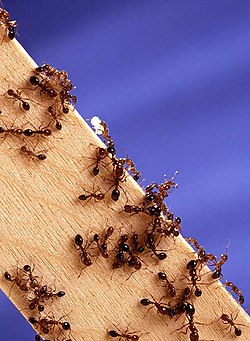| Solenopsidini | |
|---|---|
 | |
| Solenopsis invicta | |
| Scientific classification | |
| Kingdom: | Animalia |
| Phylum: | Arthropoda |
| Class: | Insecta |
| Order: | Hymenoptera |
| Family: | Formicidae |
| Subfamily: | Myrmicinae |
| Tribe: | Solenopsidini Forel, 1893 |
| Genera | |
See text | |
| Diversity [1] | |
| 20 genera | |
Solenopsidini (meaning "pipe-faced") [1] [2] is a tribe of myrmicine ants with about 20 genera.